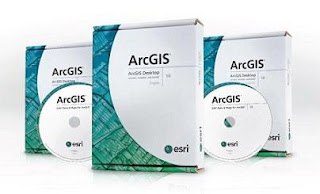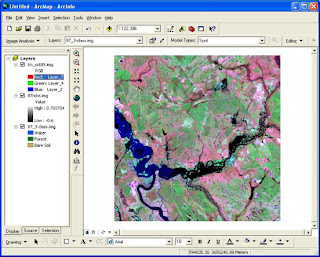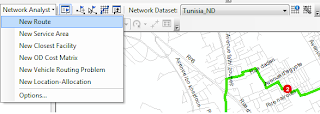Great article that I want to share and after the permession of the author :
Written by Caitlin
This post is an anniversary special. It has officially been one year since I launched my company,Geographic Design. In hindsight, perhaps launching a consulting business straight out of school with no professional network, no real-world industry experience, and no experience whatsoever with the nuts-and-bolts of running a business wasn’t exactly the foolproof endeavor I marketed in my business plan. Fortunately, at the time I had no idea how many things I didn’t know. The learning curve has been steep and it’s been a roller coaster year. Here are some of the things I figured out along the way.
1. The product a GIS consultant sells is not GIS.
The product you are selling is you – your brain, because it is uniquely capable of figuring out the best tools and processes to solve a set of problems, your communication skills to liaise with different departments, and your reputation as an expert in the field. As easy as it is to pitch the capabilities and utility of GIS, that’s not your job, it’s Esri’s. Your job is to sell yourself as a one-of-a-kind opportunity for potential clients. Talk all you like about the wonderful things the technology can do, but make sure what you’re really stressing are the ways that you will contribute to the team and help make the project successful.
2. Forget about knowing “enough” about GIS before you launch your business.
Because you never will. Think of consulting as an ongoing training opportunity. Not only will the technology change, your clients’ demands will evolve to keep up with the digital world, and each project will have unique requirements. You will be paid to do things you’ve never done before, and that’s amazing. Terrifying, but amazing. The mark of a real expert is not that they’ve memorized the manual, but that they are able to figure out anything that comes along without losing their cool. Or at least, that’s my own working definition.
3. If you’re still in school, think carefully before blowing off social events with your peers or irritating your teachers.
Post-secondary is basically a pressure cooker for building close relationships with people who can help you in the business world. Top grades are great ego-boosters, but grades have only ever been a means to an end (such as a scholarship, an internship, an achievement award, admittance to another degree program, etc). Leaving school with a solid network and friendly relationships with successful (and soon-to-be successful) people will last way longer than anyone will remember your GPA.
4. Prepare your introduction.
It’s really off-putting to potential clients/investors/network connections if you can’t articulate clearly what you’re doing and why it matters. When you’re meeting someone new, it doesn’t matter if you have years of experience, boatloads of expertise, or award-winning web mapping skills. It matters that you sound like you have all that and more before you’re finished shaking their hand. You need to be able to deliver an “off-the-cuff” statement describing your business in one or two sentences. Mine is, “I run a small Toronto-based geospatial consultancy. I work with urban designers and planners and support their work with GIS and remote sensing technology.” This is also the beginning of my elevator pitch, which has about another five sentences.
There are no big words that make people’s eyes glaze over. No awkward pauses. No time for their attention to wander or to catch someone else’s eye across the room. I have literally said the exact same thing to probably a hundred people in the past couple of months. Nine times out of ten it leads to my new contact asking for more specific information that, had I offered if immediately, they would never have remembered the next day. I’m not saying it’s perfect – so if you have any suggestions please leave them in the comments.
This doesn’t come naturally to anybody (or at least not to me or anyone I know). No one can take the big picture vision of where they are in their career, where they want to be, and how they plan to get there and distill it into two sentences on the spot. Write it all down. Refine it. Test it out. Refine it again. Memorize it before the next big event/GoGeomatics Meet-up.
5. Be honest.
Part of being a consultant means taking control of the situation. This can be intimidating. I’m often in meetings with brusque senior partners, and sometimes all I want to do is smile and nod at whatever they say. But being candid builds trust, and people want to work with people they trust. As it turns out, partners are people too.
Here are some true things I’ve told clients:
- “I’ve never done this before, but I understand what you’re going for, and I’m sure I can work it out. It might take a little extra time but I’ll work with you closely on this so that next time it comes up, we’ll have the workflow down.”
- “Your GIS data folder is pretty disorganized. Can you budget some time for me up front to get this sorted out properly? It will really help things run smoothly as the project moves forward.” (see
here for more on this.)
- “I don’t completely understand what you’re asking for. Could you sketch it for me?”
- I’ve also cut off phone conversations to do a bit of background research. I think it’s reasonable to want to execute a quick web search before answering questions about, for example, what data sets are available for a project in Abu Dhabi.
6. Define your goals. Find time to work on pro bono projects that will get you closer to achieving them.
There are a lot of interesting opportunities out there for someone starting a new venture. Unfortunately, you can justify almost any waste of time as “networking,” “profile building,” or “personal development.” Don’t get me wrong; those are all worthwhile things. And sometimes, by volunteering or working for less than the going rate, you will get back way more than you put in – a new connection, a new client, or a different sort of opportunity. But in the early stages of your business everything you do has to be done with purpose, or for profit, or (ideally) both. It’s not selfish, it’s strategic.
Make sure you’re setting clear goals, and not just financial ones. What kind of work do you want to be doing, and how will each “opportunity” you’re propositioned with move you closer to that? There are, and always will be, lots of chances to volunteer somewhere or team up with someone building the next “sure thing” web trend. Stay on task and don’t get sucked in. My strategy for this is outlined in this flow chart.
7. Pay attention to the metrics of success.
As well as defining clear goals, you need to define success. Success is not a trophy, and it doesn’t get presented to you when you’ve made a certain number of maps or hit the top of the Google search results. Success is incremental and quantifiable. Measure it out in the number of repeat clients, the decrease in the ratio of presentations given to contracts awarded, increases in web traffic, and of course, dollars earned. Sometimes success lies in reaching a personal milestone – these successes are extra special and deserve to be celebrated with champagne. Because the point of measuring success (and this is the important part) is celebrating it! Self-employed life is unpredictable, and when you’re working by yourself and for yourself, you could go the rest of your life without ever feeling like you’ve been awarded that trophy. The key is taking the time to throw yourself a party, or dishing out advice on the internet – whatever it takes to mark the occasion.








